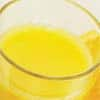
What's Hot
What's Hot
| News flashes are posted here frequently to keep you up-to-date with the latest advances in health and longevity. We have an unparalleled track record of breaking stories about life extension advances.
Natural antioxidant enzyme declines with age
By studying human lung cells, University of Southern California Leonard Davis School of Gerontology professor Kelvin J. A. Davies discovered that the production of Lon protease, which breaks up and eliminates mitochondrial proteins damaged by oxidation, diminishes as people age. Mitochondria are the cells’ power plants, whose function decreases with the passage of time. “Oxidative damage to mitochondrial proteins is thought to contribute to the aging process, but the Lon protease normally degrades such proteins,” the authors write. "We know that mitochondrial function declines with age, which is a major limitation to cells,” Dr Davies noted. “One of the components of that decline is the loss of Lon. The ability of Lon to be induced by [oxidative] stress is a very important component of overall stress resistance.” When Dr Davies and his colleagues exposed lung cells to hydrogen peroxide, which is an oxidant formed in the body as a byproduct of energy production, young cells doubled their Lon protease within five hours. While middle-aged cells took 24 hours to double their Lon protease levels, production in old cells showed no significant increase over the same time period. "In the senescent cells, the Lon levels are drastically low to begin with, and they don't increase" Dr Davies observed. “We suggest that loss of Lon stress inducibility is part of a pattern of diminishing stress adaptability that predisposes cells to senescence,” the authors conclude. —D Dye
Leucine could help maintain muscle when losing fat
Wayne Askew, PhD and Stacie Wing-Gaia, PhD studied ten individuals on a mission to climb Mt Everest over a six to eight week period. Mountain climbers often experience weight loss due to the large amount of calories burned and a failure to consume enough food. This results in a loss of fat as well as muscle, which impacts motor coordination and strength. “The significant part about this weight loss is that a disproportionate amount comes from the muscle mass," Dr Askew explained. "This can be a problem on long expeditions at high altitude because the longer climbers are there and the higher they go, the weaker they get. The body breaks down the muscle for energy, so climbers don't have it available for moving up the mountain.” "We knew that leucine has been shown to help people on very low-calorie, or so-called 'calorie-restricted diets', stay healthy at sea level," he added. "It's one of the components, the building blocks, of protein. But no one had tested whether leucine would help people stay healthy and strong at high altitudes, so we added leucine to specially prepared food bars that we gave to the climbers." The team is currently analyzing the data to confirm whether climbers who received food bars that contained leucine retained more muscle than those who received unenhanced bars. Leucine could reduce lean tissue loss by its stimulation of protein synthesis via a cell signaling factor known as mTOR. Dr Askew believes that the findings could help elderly people who are sedentary and fail to eat enough to maintain their strength. —D Dye
Without fortification and supplementation of some nutrients, many Americans would not meet recommended intake
Victor L. Fulgoni III of Nutrition Impact LLC, along with his colleagues at the Office of Dietary Supplements in Bethesda, Maryland and Tufts University in Boston, assessed the usual intake of 19 micronutrients by source for 16,110 participants in the National Health and Nutrition Examination Survey (NHANES) 2003-2006. Intake was estimated for vitamin A, thiamin, riboflavin, niacin, vitamin B6, vitamin B12, folate, vitamin C, vitamin D, vitamin E, vitamin K, calcium, phosphorous, magnesium, iron, zinc, copper, selenium and potassium. Fewer than 6 percent of the subjects had a usual intake from diet and supplements that was below the estimated average requirement (EAR) for the B complex vitamins, phosphorous, iron, copper and selenium. However, for vitamins A, C, D and E, 34 percent, 25 percent, 70 percent and 60 percent of the participants had an intake that was lower than the EAR. For minerals, 38 percent had an intake lower than the EAR for calcium and 45 percent were low in magnesium. “Enrichment and/or fortification largely contributed to intakes of vitamins A, C, and D, thiamin, iron, and folate,” the authors observe. “Dietary supplements further reduced the percentage of the population consuming less than the estimated average requirement for all nutrients.” “Without enrichment and/or fortification and supplementation, many Americans did not achieve the recommended micronutrient intake levels set forth in the Dietary Reference Intake,” they conclude. “Health professionals must be aware of the contribution that enrichment and/or fortification and dietary supplements make to the nutritional status of Americans. —D Dye
Medicinal foods win out over low-fat diet in LDL reduction
In a multicenter trial, 351 men and women with elevated serum lipids were randomized to receive six months of dietary advice concerning a low-saturated fat control diet or a dietary portfolio that emphasized plant sterols, soy protein, viscous fibers and nuts, all of which have been associated with a reduction in serum cholesterol when consumed. The latter received either the routine dietary portfolio, which involved two clinic visits, or an intensive dietary portfolio, which involved seven visits over the six month period. While participants who adhered to the control diet experienced a 3 percent average reduction in LDL-C, those who received the routine dietary portfolio had a 13.1 percent decrease and the intensive dietary portfolio was associated with a 13.8 percent average reduction. “This study indicated the potential value of using recognized cholesterol-lowering foods in combination,” the authors write. “We believe this approach has clinical application. A meaningful 13 percent LDL-C reduction can be obtained after only 2 clinic visits of approximately 60 and 40 minute sessions. The limited 3 percent LDL-C reduction observed in the conventional diet is likely to reflect the adequacy of the baseline diet and therefore suggests that larger absolute reductions in LDL-C may be observed when the dietary portfolio is prescribed to patients with diets more reflective of the general population." —D Dye
Vitamin C dissolves toxic brain protein in Alzheimer’s disease
For their research, Katrin Mani and colleagues studied the brains of mice that were bred to develop a condition similar to human Alzheimer’s disease. The authors of the report concluded that the study’s results “support the notion that an inadequate supply of vitamin C could contribute to late onset Alzheimer’s disease in humans.” "When we treated brain tissue from mice suffering from Alzheimer's disease with vitamin C, we could see that the toxic protein aggregates were dissolved,” reported Dr Mani, who is a reader in Molecular Medicine at Lund University. “Our results show a previously unknown model for how vitamin C affects the amyloid plaques." "Another interesting finding is that the useful vitamin C does not need to come from fresh fruit,” she noted. “In our experiments, we show that the vitamin C can also be absorbed in larger quantities in the form of dehydroascorbic acid from juice that has been kept overnight in a refrigerator, for example." "The notion that vitamin C can have a positive effect on Alzheimer's disease is controversial, but our results open up new opportunities for research into Alzheimer's and the possibilities offered by vitamin C," she added. —D Dye
Vitamin D receptor important in reducing colon cancer tumor growth
For their research, Héctor Palmer and his associates utilized a mouse model of colon cancer bred with mice lacking a copy of the gene for the vitamin D receptor. They found that the vitamin D receptor slowed down the retention in the cells' nuclei of a protein known as beta-catenin. Beta-catenin is normally found in the cells of the intestinal walls and facilitates the cells' cohesion. Accumulation of nuclear beta-catenin induces carcinogenesis. "Our study has confirmed the pivotal role of the vitamin D receptor in controlling the anomalous signal that sparks off the growth and uncontrolled proliferation of colon cells which, in the final instance, ends up causing a tumor to emerge", explained Dr Palmer. "The stimulation of this receptor suppresses the action of the beta-catenin protein, intercepting the series of events that change the intestinal cell into a malignant tumor cell." "These findings show that mice of this kind, which also lack the vitamin D receptor and hence do not respond to vitamin D, present larger and more aggressive tumors than mice with the vitamin D receptor", he reported. "The number of tumors is not influenced by the absence of the vitamin D receptor, which would indicate that this factor does not protect against the appearance of the tumor but does intervene in its growth phase, reducing its aggressiveness." In other experiments using cultured human colon cancer cells, beta-catenin levels increased in cells lacking the vitamin D receptor, confirming the animal study's finding. The authors conclude that ppatients with early stage colon carcinomas that still express the vitamin D receptor could benefit from therapy with vitamin D, but when vitamin D receptor expression is lost at advanced stages, tumors may be refractory to this type of treatment. —D Dye
Tea polyphenols show potential in congenital disease
Dr Thomas Smith of The Donald Danforth Plant Science Center along with his colleagues at The Children’s Hospital of Philadelphia determined that EGCG and ECG can deactivate glutamate dehydrogenase, an enzyme responsible for the digestion of amino acids that is dysregulated in HHS. In a mouse model of the disease, administration of EGCG prior to an amino acid mixture prevented the decline of blood glucose levels that would have otherwise occurred. The compound also prevented a significant drop in fasting glucose levels when administered chronically to the HHS mice, indicating a reduction in insulin secretion. Other research has shown that blocking glutamate dehydrogenase with green tea compounds helps destroy aggressive brain tumors known as gliobastomas as well as the nonmalignant tumors that grow on a number of organs in the inherited disease known as tuberous sclerosis complex disorder. In the current series of experiments involving the effects of the compounds in HHS, X-ray crystallography was used to define their atomic structure when bound to glutamate dehydrogenase. “While these compounds from green tea are extremely safe and consumed by millions every day, they have a number of properties that make them difficult to use as actual drugs,” noted Dr Smith. “Nevertheless, our ongoing collaboration with the Stanley lab shows that there are natural compounds from plants that can control this deadly disorder and, with the atomic structure in hand, can be used as a starting point for further drug design.” —D Dye
Prenatal supplements may be inadequate when it comes to getting enough vitamin D
Dr Timothy Green and his colleagues at the Child & Family Research Institute at BC Children’s Hospital recruited 336 women between 20 and 35 weeks of gestation for the current study. Questionnaire responses provided information on supplement use and blood samples were analyzed for serum 25-hydroxyvitamin D. Nearly 80 percent of the women reported using supplements that contained 400 international units vitamin D. Although severe deficiency, characterized as a vitamin D level of less than 25 nanomoles per liter (nmol/L), was found in only 1 percent of the participants, 65 percent had levels of lower than 75 nmol/L, which is less than the level recommended by the Canadian Pediatric Society for pregnant women. Furthermore, 24 percent had levels of less than 50 nmol/L, which is below Health Canada’s vitamin D recommendation for all women. "We can obtain vitamin D from the sun, but in our climate we see little sunlight five to seven months a year," he added. "There are few good natural sources of vitamin D and fortified foods do not contain enough vitamin D on their own. That’s why research into supplements, how much pregnant women should be taking and how effective they are, is so important." —D Dye
Vitamin D deficiency associated with early menarche
Eduardo Villamor of the University of Michigan School of Public Health and his colleagues at the National University of Columbia evaluated the association between age at menarche and serum 25-hydroxyvitamin D levels in 242 girls aged 5 to 12 years who resided in Bogota. The girls were followed for a median of 30 months, during which they were periodically queried concerning the occurrence and date of menarche. Over the follow-up period, 23 percent of the girls whose vitamin D levels were categorized as sufficient at 75 nanomoles per liter or more reported having undergone menarche compared with 57 percent of those whose levels were deficient at less than 50 nanomoles per liter. Deficient girls reached menarche at an average age of 11.8 in comparison with 12.6 years among the sufficient girls. For girls who were at least nine years old at the beginning of the study, the probability of attaining menarche over follow-up was 2.39 times greater among those who were deficient in vitamin D compared to subjects with sufficient levels. "We know relatively little about what triggers puberty from an environmental perspective," commented Dr Villamor, who is also affiliated with the Harvard School of Public Health. "If we learn what is causing the decline in age of first menstruation, we may be able to develop interventions." —D Dye
Curcumin shows promise as tendinitis treatment
Mehdi Shakibaei of Ludwig-Maximilian-University's Musculoskeletal Research Group and colleagues studied the effects of curcumin in cultures of human tendon cells. Curcumin has been shown in other research to help reduce inflammation in addition to providing other beneficial effects. The team found that curcumin inhibited inflammation and programmed cell death induced by interleukin-1 beta. Interleukins a type of are cell-signaling protein molecule called cytokines that can activate inflammatory genes by triggering a switch known as nuclear factor kappa beta (NF-κB). By preventing the activation of this switch, inflammation in the body's tissues is reduced. "These results demonstrate, for the first time, a potential role for curcumin in treating tendon inflammation through modulation of NF-kB signaling," the authors announce. “Our research is not suggesting that curry, turmeric or curcumin are cures for inflammatory conditions such as tendinitis and arthritis," stated Dr Ali Mobasheri of Ludwig-Maximilian University who co-led the study. "However, we believe that it could offer scientists an important new lead in the treatment of these painful conditions through nutrition. Further research into curcumin, and chemically-modified versions of it, should be the subject of future investigations and complementary therapies aimed at reducing the use of nonsteroidal anti-inflammatory drugs, the only drugs currently available for the treatment of tendinitis and various forms of arthritis.” —D Dye
Accelerated aging found in adult children of stressed mothers
The team assessed white blood cell telomere length in 94 healthy young men and women, 49 of whom had mothers who had experienced traumatic life events during their pregnancies. Telomeres are segments of DNA that protect the ends of the cells’ chromosomes, helping to maintain their stability. Because telomeres shorten with age, telomere length is used as a marker of cellular aging. The researchers found shorter telomeres in subjects whose mothers had experienced traumatic stress. The amount of telomere shortening experienced on average by this group was equivalent to being three and one half years older than participants born to mothers who had uneventful pregnancies. The effect was more pronounced in women than men. "Our previous research on prenatal stress exposure has shown its effects on long-term metabolic, immune, endocrine and cognitive function," stated lead author, Pathik D. Wadhwa, MD, who is a professor of psychiatry & human behavior, obstetrics & gynecology, pediatrics, and epidemiology at the University of California, Irvine. "But this is the first to show the impact of prenatal stress on cell aging in humans, and it sheds light on an important biological pathway underlying the developmental origins of adult disease risk." First author Sonja Entringer added that "These results indicate that stress exposure in intrauterine life is a significant predictor of adult telomere length – even after accounting for other established prenatal and postnatal influences on telomere length." —D Dye
Prenatal DHA supplementation means fewer colds for infants
In a randomized trial, 1,100 pregnant women residing in Mexico were given 400 milligrams of DHA derived from algae or a placebo from the 18th to 22 week of gestation until the birth of their infants. The occurrence of illness symptoms were reported by caregivers when the infants were one, three and six months of age. At one month of age, combined cold symptoms were 24 percent lower among infants whose mothers received DHA than in those mothers did not receive it. The incidence of cough, phlegm and wheezing was reduced by 26 percent, 15 percent and 30 percent in the DHA group. At three months of age, children born to mothers who received DHA spent 14 percent less time ill, and at six months, the group had a shorter duration of fever, nasal secretions, breathing difficulties, rash and other illness. "This is a large scale, robust study that underscores the importance of good nutrition during pregnancy," commented lead researcher Usha Ramakrishnan, PhD, who is an associate professor at the Hubert Department of Global Health at Emory's Rollins School of Public Health. "Our findings indicate that pregnant women taking 400 mg of DHA are more likely to deliver healthier infants." —D Dye
Beans, rice, green vegetables associated with fewer polyps
Yessenia M. Tantamango and colleagues evaluated data from 2,818 participants in the Adventist Health Study-1, which ascertained the consumption of various foods in 1976-77, and Adventist Health Study-2, which determined whether participants in the first study had polyps diagnosed twenty-six years later. While consuming legumes three times or more per week was associated with a 33 percent reduction in the risk of developing colorectal polyps, eating brown rice just once per week was associated with a 40 percent lower risk. Those who consumed cooked green vegetables daily had a 24 percent lower risk of polyps compared to those who consumed them fewer than five times per week. Additionally, dried fruit eaten at least three times a week was associated with a 26 percent decrease in the risk of polyps compared to that associated with less than weekly consumption. "Legumes, dried fruits, and brown rice all have a high content of fiber, known to dilute potential carcinogens," explained Dr Tantamango. "Additionally, cruciferous vegetables, such as broccoli, contain detoxifying compounds, which would improve their protective function." "Eating these foods is likely to decrease your risk for colon polyps, which would in turn decrease your risk for colorectal cancer," she noted. "While a majority of past research has focused on broad food groups, such as fruits and vegetables, in relation to colon cancer, our study focused on specific foods, as well as more narrowed food groups, in relation to colon polyps, a precursor to colon cancer. Our study confirms the results of past studies that have been done in different populations analyzing risks for colon cancer." —D Dye
Grape flavonoids show sun protection benefit
A team led by University of Barcelona Faculty of Biology member Marta Cascante tested the effects of several antioxidant polyphenolic fractions found in grapes on human keratin cell cultures exposed to long-wave UVA and medium-wave UVB radiation. They found that the polyphenols inhibited UVA and UVB-induced intracellular reactive oxygen species generation as well as the activation of enzymes known as p38 and JNK1/2 that trigger cell death. The greatest benefit was observed for fractions that were rich in procyanidin oligomers and gallate esters. "These polyphenolic fractions inhibit the generation of the reactive oxygen species and, as a result, the subsequent activation of the JNK and p38 enzymes, meaning they have a protective effect against ultraviolet radiation emitted by the sun", Dr Cascante explained. “These encouraging in vitro results support further research and should be taken into consideration into the clinical pharmacology of plant-derived polyphenolic extracts as novel agents for skin photoprotection,” the authors recommend. Dr Cascante added that "This study supports the idea of using these products to protect the skin from cell damage and death caused by solar radiation, as well as increasing our understanding of the mechanism by which they act." —D Dye
|

 A team at the University of Southern California has reported new findings concerning the role of an enzyme known as Lon protease in human aging. The research was described online on August 24, 2011 in
A team at the University of Southern California has reported new findings concerning the role of an enzyme known as Lon protease in human aging. The research was described online on August 24, 2011 in  A presentation at the 242nd National Meeting & Exposition of the American Chemical Society on August 28, 2011 suggests a possible role for the amino acid leucine in maintaining lean tissue during periods of
A presentation at the 242nd National Meeting & Exposition of the American Chemical Society on August 28, 2011 suggests a possible role for the amino acid leucine in maintaining lean tissue during periods of  An article published online on August 24, 2011 in the
An article published online on August 24, 2011 in the  Consuming specific foods known to have a cholesterol-reducing effect are more helpful to reduce low-density lipoprotein
Consuming specific foods known to have a cholesterol-reducing effect are more helpful to reduce low-density lipoprotein  The August 5, 2011 issue of the
The August 5, 2011 issue of the  Researchers at the Vall d'Hebron Institute of Oncology and the Alberto Sols Institute of Biomedical Research in Spain report in the journal
Researchers at the Vall d'Hebron Institute of Oncology and the Alberto Sols Institute of Biomedical Research in Spain report in the journal  An article published online on August 3, 2011 in
An article published online on August 3, 2011 in  The July/August 2011 issue of the
The July/August 2011 issue of the  An article published online on August 10, 2011 in the
An article published online on August 10, 2011 in the  An article published online on June 13, 2011 in the
An article published online on June 13, 2011 in the  An article published online on August 3, 2011 in the
An article published online on August 3, 2011 in the  A report published online on August 1, 2011 in the journal
A report published online on August 1, 2011 in the journal  A study conducted at Loma Linda University found a reduction in the risk of developing colorectal polyps in association with consuming specific high fiber foods. The findings were reported in the May, 2011 issue of
A study conducted at Loma Linda University found a reduction in the risk of developing colorectal polyps in association with consuming specific high fiber foods. The findings were reported in the May, 2011 issue of  In the May 11, 2011 issue of the
In the May 11, 2011 issue of the 